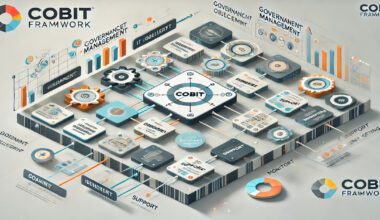Summary- Meta Learning, or “learning to learn,” equips Machine Learning models to adapt quickly to new tasks with minimal data. By leveraging knowledge from multiple tasks, Meta Learning enhances efficiency, improves generalisation, and reduces training time. Its applications span fields such as natural language processing, reinforcement learning, and few-shot learning.
Introduction
In the rapidly evolving field of Machine Learning, the ability to learn from limited data and adapt to new tasks is becoming increasingly important. Traditional Machine Learning models often require large amounts of labelled data to perform well, which can be a significant limitation in many real-world applications. This is where Meta Learning comes into play.
Also known as “learning to learn,” Meta Learning focuses on developing algorithms that can learn from a variety of tasks and generalise their knowledge to new, unseen tasks with minimal data. This blog will explore the concept of Meta Learning, its methodologies, applications, benefits, and challenges.
What is Meta Learning?
Meta Learning is a subfield of Machine Learning that aims to improve the learning process itself. Instead of training a model solely on a specific task, Meta Learning algorithms are trained on a distribution of tasks.
The goal is for these algorithms to learn how to adapt quickly to new tasks using only a few examples. This approach mimics human learning, where individuals can generalise knowledge from previous experiences to tackle new problems effectively.
Key Concepts in Meta Learning
Task Distribution: In Meta Learning, models are trained on multiple tasks drawn from a distribution. Each task may have different characteristics, but they share some underlying structure that the model can leverage.
Few-Shot Learning: A key aspect of Meta Learning is few-shot learning, where models are designed to perform well with very few training examples for each new task. This is particularly useful in scenarios where data collection is expensive or time-consuming.
Transfer Learning: Meta Learning often involves transferring knowledge from one task to another. By leveraging previously learned information, models can adapt more efficiently to new challenges.
How Meta Learning Works
Meta Learning, also known as “learning to learn,” is a Machine Learning approach that focuses on developing algorithms capable of adapting quickly to new tasks with minimal data.
The goal is to enable models to learn from a variety of tasks and generalise that knowledge to tackle new challenges efficiently. Meta Learning typically involves three main stages:
- Meta-Training: During this phase, the model is exposed to a variety of tasks. It learns how to learn by optimising its parameters based on the performance across these tasks. The objective is to develop a generalizable representation that can be adapted to new tasks.
- Meta-Validation: After training, the model’s performance is evaluated on a separate set of tasks that it has not encountered before. This step helps assess how well the model can generalise its knowledge.
- Meta-Testing: Finally, the model is tested on entirely new tasks with limited examples. The goal is to measure its ability to adapt quickly and accurately.
Types of Meta Learning Approaches
Meta Learning categorised into several approaches based on how they optimise learning. Here, we will explore the main types of Meta Learning approaches: model-based, metric-based, and optimization-based Meta Learning.
Model-Based Meta Learning
This approach involves using models that can adapt their internal parameters based on new data. Examples include recurrent neural networks (RNNs) and memory-augmented neural networks (MANNs). These models can adjust their state based on sequences of task-specific training data.
Metric-Based Meta Learning
In this approach, the focus is on learning effective distance metrics or embeddings that allow for quick comparisons between examples. Techniques such as prototypical networks and matching networks fall under this category.
Optimisation-Based Meta Learning
This method involves optimising the learning process itself by adjusting hyperparameters or initial parameters across different tasks. The Model-Agnostic Meta Learning (MAML) algorithm is a prominent example of this approach.
Key Benefits of Using Meta Learning
This innovative methodology has garnered significant attention due to its potential to overcome some of the limitations associated with traditional Machine Learning techniques. Below are the key benefits of using Meta Learning:
Efficiency with Limited Data
One of the most significant advantages of Meta Learning is its ability to perform well with minimal training data for new tasks. This capability is invaluable in domains where data collection is costly or impractical.
Rapid Adaptation
Meta Learning algorithms can quickly adapt to changes in the environment or task requirements, making them suitable for dynamic applications such as robotics and autonomous systems.
Improved Generalisation
By training on multiple related tasks, Meta Learning promotes better generalisation capabilities, allowing models to perform well across various scenarios without extensive retraining.
Reduced Training Time
Since meta-learned models require fewer examples for adaptation, they also tend to have shorter training times compared to traditional models that need extensive datasets for each specific task.
Flexibility Across Domains
Meta Learning techniques can be applied across various domains and applications, from computer vision and natural language processing (NLP) to reinforcement learning and robotics.
Applications of Meta Learning
Meta Learning has found applications in numerous fields due to its versatility. Its flexibility makes Meta Learning particularly valuable in various real-world applications. Below are some key applications of Meta Learning across different domains.
Few-Shot Learning
Few-shot learning aims to train models capable of recognizing new classes with very few labelled examples (often just one or five). For instance, in image classification tasks, a meta-learned model could identify a new animal species after being shown only a few images of it.
Natural Language Processing (NLP)
In NLP, Meta Learning techniques can facilitate few-shot learning for tasks like sentiment analysis or named entity recognition (NER). By leveraging knowledge from related language tasks, models can quickly adapt their understanding of language nuances with minimal examples.
Reinforcement Learning
Meta Learning plays an essential role in reinforcement learning by enabling agents to adapt their strategies based on past experiences across different environments or tasks. For example, in robotics, an agent trained with Meta Learning could quickly learn how to navigate various terrains after being exposed to diverse environments during training.
Hyperparameter Optimisation
Meta Learning can automate hyperparameter tuning by learning from previous experiments and selecting optimal configurations for new models or tasks without manual intervention.
Transfer Learning
In scenarios where data from one domain can inform another (e.g., transferring knowledge from image classification in one context to another), Meta Learning provides frameworks that facilitate this transfer efficiently.
Challenges in Meta Learning
While it offers significant advantages, such as improved efficiency and flexibility, there are several challenges associate with its implementation and effectiveness. This article explores the various challenges in Meta Learning, drawing insights from recent studies and practical experiences.
Task Diversity
The effectiveness of Meta Learning depends significantly on the diversity and similarity of the tasks used during training. If tasks are too dissimilar or lack common structures, the model may struggle when adapting to new tasks.
Data Efficiency
While Meta Learning aims at improving efficiency with limited data, designing effective algorithms that achieve this goal remains an ongoing challenge in research.
Meta-Overfitting
Just like traditional Machine Learning models can overfit their training data, meta-learned models may also overfit during the meta-training phase if not properly regularised or validated.
Algorithm Sensitivity
Some Meta Learning algorithms may be sensitive to hyperparameter choices or initialization conditions, which could affect their performance across different scenarios.
Computational Complexity
Training Meta Learning models often requires significant computational resources due to their complexity and the need for multiple iterations over various tasks.
Real-World Use Cases of Meta Learning
Meta Learning approach is particularly valuable in situations where data is scarce or expensive to obtain, making it a critical area of research and application across various domains. Here are some of the key applications of Meta Learning:
Medical Diagnosis
In healthcare applications, Meta Learning has been employed for rapid diagnosis using limited patient data—especially useful in rare diseases where obtaining large datasets is challenging. By leveraging knowledge from similar diseases or conditions, models trained through Meta Learning can assist clinicians in making informed decisions quickly.
Autonomous Vehicles
Meta Learning enables autonomous vehicles to adapt their driving policies based on diverse driving environments encountered during training sessions—allowing them to respond effectively in unfamiliar situations while minimising accidents and improving safety protocols.
Robotics
Robotic systems use Meta Learning techniques for skill acquisition and adaptation when faced with novel objects or environments—allowing them not only to learn efficiently but also transfer skills learned from one task (e.g., stacking blocks) into another (e.g., sorting items).
Personalised Recommendations
In recommendation systems—such as those used by streaming services—Meta Learning helps tailor suggestions based on user preferences gleaned from limited interactions instead of requiring extensive historical data about every user’s viewing habits.
Conclusion
Meta Learning represents an exciting frontier in Machine Learning research and application by enabling machines not just to learn but also improve how they learn across diverse contexts efficiently and effectively—even with minimal data available for new tasks!
As we continue exploring this innovative approach further through ongoing research efforts—and addressing its inherent challenges—we stand poised at the threshold of unlocking even greater potential within artificial intelligence systems across various industries!
Frequently Asked Questions
What Is the Primary Goal of Meta Learning?
The primary goal of Meta Learning is to enable machines to learn how to learn efficiently from a variety of tasks so they can quickly adapt their knowledge when faced with new challenges using minimal data.
How Does Few-Shot Learning Relate to Meta Learning?
Few-shot learning is a key aspect of Meta Learning that focuses specifically on enabling models to perform well with very few training examples for each new task by leveraging knowledge gained from previous experiences across related tasks.
What Are Some Common Applications of Meta Learning?
Common applications include few-shot image classification, natural language processing tasks like sentiment analysis, reinforcement learning for robotics, hyperparameter optimization for Machine Learning models, and transfer learning between different domains or contexts.




